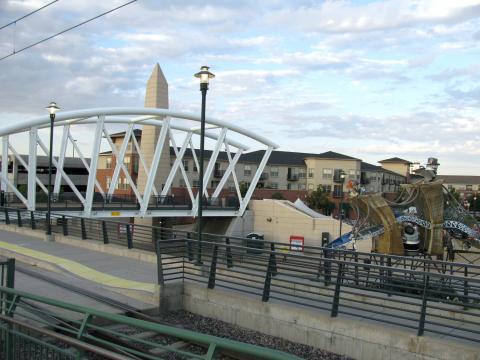Outsourced HR and Payroll Services in Englewood, Colorado
Payroll services in Englewood
When you employ your local Payroll Vault in Englewood, you access a dedicated team to ensure you are compliant, and gain access to our suite of services that guarantee you are supported with cutting-edge technology solutions to make your payroll processing simple and secure. Our commitment to help businesses succeed, combined with our unparalleled customer service, allows us to successfully customize and highly personalize your services.Facts about Englewood
The City of Englewood is a Home Rule Municipality located in Arapahoe County, Colorado, United States. As of 2010, the population was 30,255. Englewood is part of the Denver-Aurora Metropolitan Area. Englewood is located in the South Platte River Valley east of the Front Rangeand immediately south of central Denver. Downtown is located immediately east of the confluence of Little Dry Creek and the South Platte River, between Santa Fe Drive and Broadway.
Englewood is the fourth most populous city in Arapahoe County and, in 2010, was the twenty-third most populous city in Colorado.
History
The history of Englewood begins in 1858, when gold was discovered on what came to be called Little Dry Creek by William Green Russell, an early settler of the high plains. Two years later, Thomas Skerritt, considered to be the founder of the city, established a home in the area, which was called Orchard Place. Four years later the first road connecting Denver and Orchard Place was created by Skerritt himself using his own plough. In 1879 the first telephone arrived in the area.
1883 was an important year, as it was the year that the Cherrelyn horsecar path was laid. The Cherrelyn trolley was and is an important city icon, being carried up Broadway by horse and down by gravity. 1903 brought incorporation, but Skerritt was edged out by J.C. Jones as the first city mayor. Jones was a prominent landowner, having originally owned almost all of what is now north Englewood. The next two years brought the establishment of the first newspaper in the city, soon to be named the Herald. In 1905 Swedish National Sanitorium was founded, soon to become the massive present-day Swedish Medical Center. 1906 brought the first pavement and street lights, and a year later the police and fire departments were established. In 1908 the famed Cherrelyn horse trolley stopped running.
1948 was the start of a great period of change for the city. 2,500 acres (1,000 ha) on the Platte Canyon were purchased, and soon McLellan Reservoir was created. This ensured water independence from the powerful Denver Water, and in fact, Englewood provides water to most of the south metro area now due to its vast, early-established water rights. Soon after the city embarked on a huge building boom; most of the city was in fact built up by 1960.
In 1965 City Park was sold to make way for Cinderella City, the largest mall west of the Mississippi Riverand one of the largest in the world when it opened in 1968. The developer provided the funds to create a vast city park network to replace the single City Park that the mall was built on. Thirty years later, the city demolished the defunct mall in order to make way for a new, transit-oriented development that would also contain a new Civic Center, library, and the relocated city hall. The RTD completed its southwest light rail corridor in 2000, and established passenger rail transit in Englewood.
In 2004 Englewood opened the Pirates Cove water park as part of a multimillion-dollar improvement package for the city parks system. In addition to Pirates Cove many improvements were made to the South Platte River trail system and to the Englewood Recreation Center, originally constructed in 1975.
Englewood is a full-service city with its own, independent park, library, and public works systems. Englewood provides snowplow service to neighboring municipalities and water to a large portion of the metro area.










